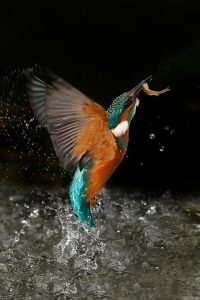 A European funded seabird project called FAME (Future of the Atlantic Marine Environment) is set to track seabird movements around the coastlines of Europe, including Ireland, the UK, France, Spain and Portugal.
A European funded seabird project called FAME (Future of the Atlantic Marine Environment) is set to track seabird movements around the coastlines of Europe, including Ireland, the UK, France, Spain and Portugal.
“We know more about the journeys of albatrosses in the Southern Ocean than we do about some of the seabirds around our own shores,” said Dr Ellie Owen, a seabird scientist working on the FAME project.
Using satellite tracking technology, the project aims to establish what areas are important to these ocean travellers when they head away from our shores to feed. The knowledge acquired should help optimise the selection of marine protected areas that can be so vital to the conservation of seabird species, some of which are experiencing a worryingly rapid decline.
Spectacular species in serious decline
“The sights and sounds of thousands of seabirds packed into dense nesting colonies along our most rugged coastlines create some of our greatest wildlife spectacles: but, there are concerns that these colonies are dwindling as some species are struggling for survival,” said Dr Owen.
“Up to know we’ve known very little about the movements of these birds when they venture out to sea to find food. For example, we know how many kittiwakes there are in the UK, and we know they’ve declined by 30 per cent between 2000 and 2010. But we don’t know where these ocean travellers are going to fish for their chicks’ suppers. But now, just when these birds need our help, we’re on the cusp of filling this information void with vitally-important data.”
Tiny devices attached to the birds will record and transmit location data to scientists once every 100 seconds, building an incredibly accurate picture of where these birds go and where they spend the most time. It’s the sort of data scientists could only dream about gathering until very recently.
Some of our seabirds more threatened than giant panda
“European seabirds face a variety of threats from dwindling food supplies, climate change, entanglement with fishing gear and pollution. By recording these birds’ movements we are building a greater understanding of their requirements so we can begin to give these species the protection they need,” said Dr Owen.
Mark Bolton, a seabird scientist with the project’s lead partner the RSPB, highlighted the seriousness of the threat to some of our seabird species through comparison with flagship conservation species of terrestrial ecosystems: “We know that some species are declining rapidly. For example, the Balearic shearwater – a dove-sized relative of the albatross – is reckoned to be facing a greater threat of extinction than the tiger, mountain gorilla or giant panda.”
The FAME project is funded by the European Commission through its programmes: the European Regional Development Fund, the Atlantic Area Transnational Programme. The UK based RSPB is lead partner on the project and is joined by BirdWatch Ireland, LPO in France; SEO in Spain and SPEA in Portugal.








